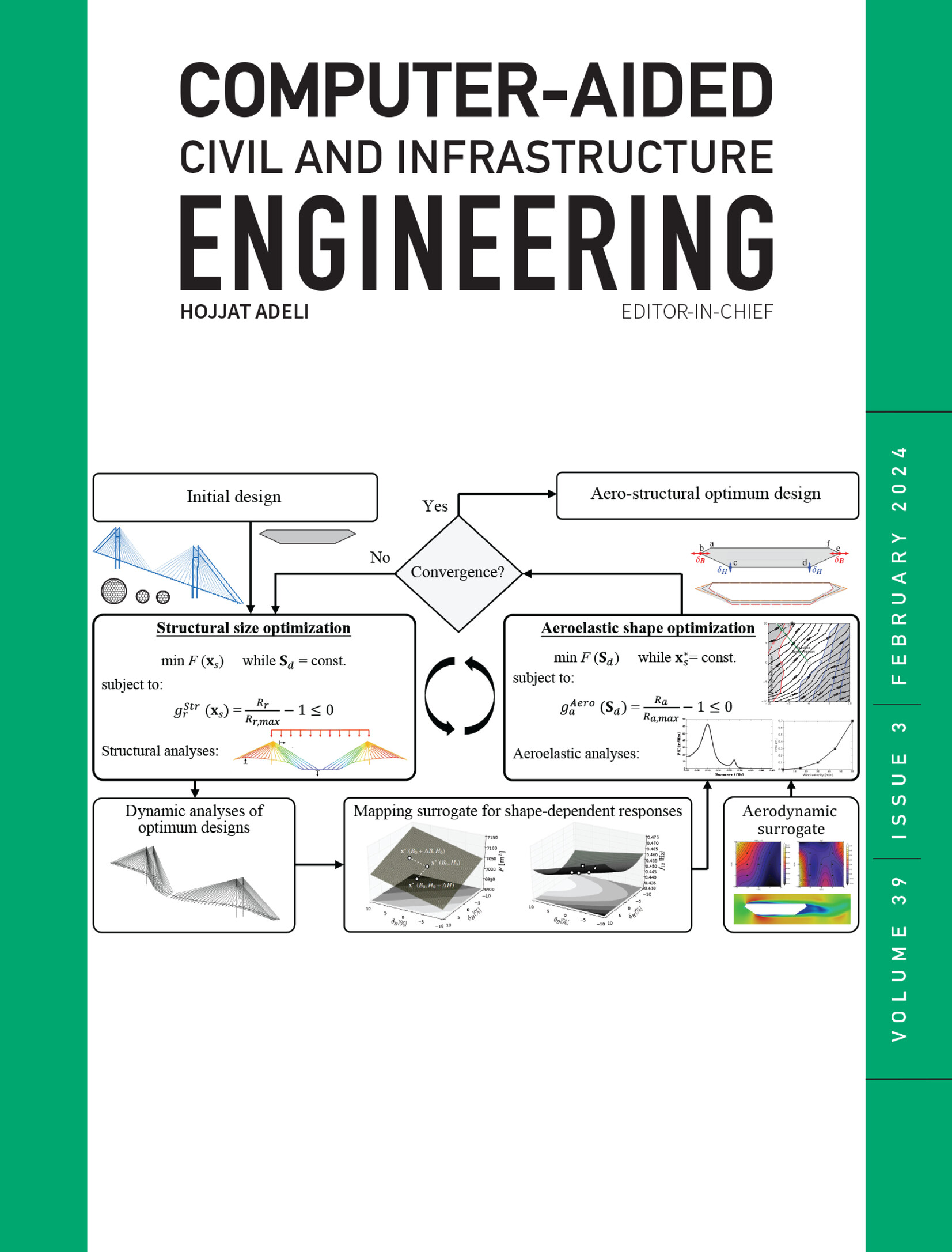Image-based large language model approach to road pavement monitoring
IF 9.1
1区 工程技术
Q1 COMPUTER SCIENCE, INTERDISCIPLINARY APPLICATIONS
引用次数: 0
Abstract
Accurate and rapid assessment of pavement surface condition is essential for maintaining transportation safety and minimizing vehicle wear. Manual pavement inspections are subjective and time-consuming, and machine learning methods typically require large labeled datasets. This study introduces an innovative zero-shot learning method that leverages large language models’ (LLMs) image analysis and natural-language understanding capabilities for accurate road condition assessment. Prompts were designed in alignment with the pavement surface condition index criteria to generate multiple evaluation models, which were then compared against official scores to identify an optimized configuration. Tests conducted using Google Street View imagery indicate that the optimized LLM-based model achieves a mean absolute error of 1.07 on a 0–10 scale, outperforming expert evaluations. The proposed approach enables rapid, accurate, and consistent assessments without the need for labeled data, demonstrating the transformative role of LLMs in automating infrastructure monitoring and emphasizing the importance of structured prompt engineering for reliable performance.基于图像的道路路面监测大语言模型方法
准确、快速地评估路面状况对于维护交通安全和减少车辆磨损至关重要。人工路面检查是主观且耗时的,机器学习方法通常需要大量标记数据集。本研究引入了一种创新的零采样学习方法,该方法利用大型语言模型(llm)的图像分析和自然语言理解能力来进行准确的路况评估。根据路面状况指数标准设计提示,生成多个评估模型,然后将其与官方得分进行比较,以确定优化配置。使用谷歌街景图像进行的测试表明,优化后的基于llm的模型在0-10范围内的平均绝对误差为1.07,优于专家评估。所提出的方法能够在不需要标记数据的情况下进行快速、准确和一致的评估,展示了llm在自动化基础设施监控中的变革作用,并强调了结构化快速工程对可靠性能的重要性。
本文章由计算机程序翻译,如有差异,请以英文原文为准。
求助全文
约1分钟内获得全文
求助全文
来源期刊
CiteScore
17.60
自引率
19.80%
发文量
146
审稿时长
1 months
期刊介绍:
Computer-Aided Civil and Infrastructure Engineering stands as a scholarly, peer-reviewed archival journal, serving as a vital link between advancements in computer technology and civil and infrastructure engineering. The journal serves as a distinctive platform for the publication of original articles, spotlighting novel computational techniques and inventive applications of computers. Specifically, it concentrates on recent progress in computer and information technologies, fostering the development and application of emerging computing paradigms.
Encompassing a broad scope, the journal addresses bridge, construction, environmental, highway, geotechnical, structural, transportation, and water resources engineering. It extends its reach to the management of infrastructure systems, covering domains such as highways, bridges, pavements, airports, and utilities. The journal delves into areas like artificial intelligence, cognitive modeling, concurrent engineering, database management, distributed computing, evolutionary computing, fuzzy logic, genetic algorithms, geometric modeling, internet-based technologies, knowledge discovery and engineering, machine learning, mobile computing, multimedia technologies, networking, neural network computing, optimization and search, parallel processing, robotics, smart structures, software engineering, virtual reality, and visualization techniques.

 求助内容:
求助内容: 应助结果提醒方式:
应助结果提醒方式:


